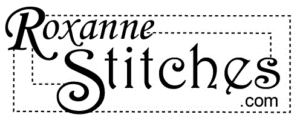Hi Everyone! For those of us that own, love and are using the Singer Quantum Stylist 9960 and want to explore the “value added bonus feet” that came with this machine, here we go! I will be starting with the most requested foot, The Adjustable Binding Foot.
Here’s a list of the bonus feet that came along with this machine:
1. Adjustable Binding Foot
I know many of you have asked and have been waiting for this!! Finally, I got it DONE! The Adjustable Binding Foot Review is here and with a video too. I understand why so many of you were interested in seeing this foot in action.
There are no written instructions in the manual for this foot or any of the other “value added bonus feet” that came with the Singer Quantum Stylist 9960. I’ve never used a foot like this before, so this was new for me too. I have to say, it was pretty cool to explore, and think it’s a nice foot to have. The foot itself is very unique. There is an adjustable channel in the center of the foot which holds the fabric and binding together as it’s being sewn along. This foot can be used for applying binding in a variety of widths by adjusting the screw set, however I only practiced and demoed 1/4″ binding.
There are 2 adjustable screw sets on this foot:
1. There is a vertical sliding screw set on the front right side of the foot which adjusts the width of the channel for the binding to ride inside. By turning the sew set in the clockwise direction, or away from you, the channel increases. By turning the screw set in the opposite direction, the channel decreases. The foot has marking on the channel to accommodate 1/4″, 1/2″ and 3/4″ bindings with the machine needle set to the center position.
2. There is also another horizontal screw set adjustment on the back part of the foot. This is an additional adjustment to help position your binding more accurately.
Installing the Adjustable Binding Foot:
The first thing you need to know is that this foot is attached to the machine with the special plastic shank that came with this bonus foot collection. The foot slides onto the shank from front to back, it’s not a snap on foot. It won’t work with the shank that’s used with the standard accessories. It’s easy enough to attach and disconnect, but please be gentle. The shank IS after all, plastic. Make sure not to over tighten the shank to the machine, either. Check for proper alignment by making sure the shank is centered to the needle.
Set your machine needle to the left position. Adjust the stitch length slightly longer than default. Keep in mind that the binding itself is 4 layers of fabric and then adding 1 or 2 layers of fabric to bind creates a thick seam. A longer stitch length will help the combination glide through the machine more easily.
Adjust the front vertical screw set to the width of the binding being attached. Attach the foot to the shank of the machine. Adjust the back screw set to align the needle properly with the edge being sewn slightly to the right of the edge of the binding. Start by wrapping the binding around your fabric edge.
Insert the fabric and binding into the channel making sure the binding is positioned neatly around the edge of the fabric. Start to sew. Re position the binding onto your fabric as you move along slowly. I chose to do the demo with a straight stitch, however a zigzag stitch can also be used.
Tips for attaching binding:
Sewing binding on a straight edge cut on the straight grain is easy. It’s helpful to keep the binding a little taunt while sewing to achieve smooth results. Attaching binding to a curved surface whether it be an inside curve or an outside curve can be challenging.
Inside Curve: When applying binding to an inside curve, it’s helpful to hold the binding more tautly, easing less binding into the curve. If the binding is sewn onto and inward curve with too much ease, it may cause the bound edge to wrinkle and not be smooth.
Outside Curve: When applying binding to an outside curve, it’s helpful to allow the binding to ease around the curve giving more flexibility to the outer most edge. If pulled too tightly on an outside curve, the binding can collapse and the edge will roll inward.
I hope all of you that have commented on my YouTube Channel regarding instruction and demo on the particular foot will find this information helpful. I think I’ve shown that this foot is easy to use and can be very useful in many applications.
Have a Happy Creative Day!!
Roxanne





Thank you, thank you, thank you. I've been waiting for a video on this foot. You make it looks so easy. I can do this.
Thanks for commenting. This has been the most requested foot demo that I've received. Glad you thought you'll be able to use this foot. Good luck!!
You made that look super easy! thanks for a great tutorial!
Thank you for doing a post on this! I always have a hard time figuring this out.
Thanks Merissa.
Thanks Heather. It is easy. Hope you give it a try.
Hi, I am Nova from Indonesia, I just bought singer quantum couples months ago, I bought the standar package (the seller didn’t told me that he there were the value added package), I knew it from your video in utube.. Now I want to have the special presser feet including the plastic shank, do you have any idea where can I get them? Thanks before
Hi Nova! Many of the feet are available on Amazon. Don’t think the value added foot collection is offered as a package deal. HTH